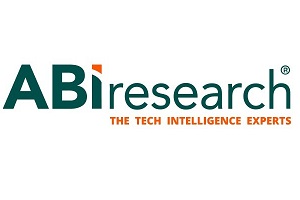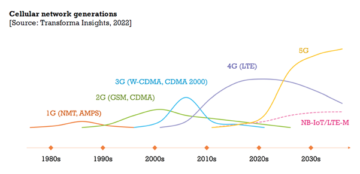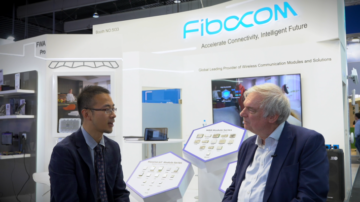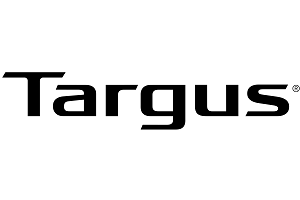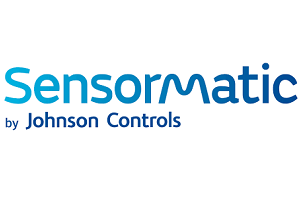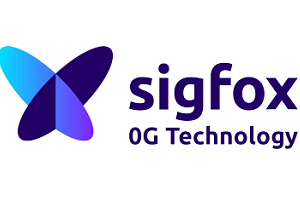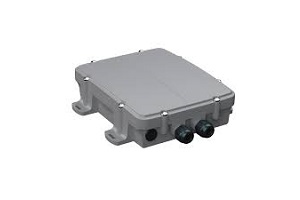As telecommunications technology progresses, a new connectivity era is about to dawn. The simple-looking SIM card is jumping on the bandwagon of technology change, becoming increasingly software-defined. This new eSIM technology has the potential to enhance connectivity, permitting a reduction in IoT deployment costs, says Mohit Shrivastava, chief analyst ICT at Future Market Insights. Besides, chief information officers will be able to reduce the cost of ownership, enhance flexibility, and offer a broad range of end-user benefits.
An embedded subscriber identity module, or eSIM, is a programmable SIM card that is physically connected, in other words soldered, to a smartphone’s motherboard. While it cannot be removed, an eSIM card performs all the functions of a conventional SIM. The objective of eSIMs is to reduce the number of restrictions and increase the utility of mobile connectivity. It is expected that eSIM subscriptions are expected to rise astronomically, at a 30% compound annual growth rate (CAGR) from 2023 to 2033, reaching a net worth of [$13.51 billion (€12.64 billion)].
As the number of connected Internet of Things (IoT) devices and smart IoT solutions increase massively across the world, challenges related to maintaining connectivity are rising as well. Key industries such as agriculture, transportation, healthcare, oil & gas, manufacturing, and retail, are all becoming technology intensive. Maximum connectivity issues arise across mobile network operations, an issue that eSIM cards are likely to overcome. In this article, we shall delve into how embedded SIMs are expected to provide an alternative to conventional telecom services, translating into increased returns to scale by several business enterprises. It will focus on real-life use cases and how the technology has been deployed to yield more operational flexibility.
eSIMs to help overcome everyday IoT connectivity challenges
It is expected that the number of connected IoT devices will amount to around 75 billion units worldwide by 2025, while the total data volume of these devices globally would reach 79.4 zettabytes. Naturally, it is prudent to expect obstacles to connectivity, prompting businesses to spend extra time and money on managing multiple connectivity partners, securing expensive contracts, and experiencing poor availability.
Organisations often rely on mobile network operators, as well as mobile virtual network operators to help maintain connectivity. In the former case, wireless coverage across different geographies can vary significantly. This oftentimes results in the loss of connection with home carrier networks, forcing them to migrate to another service provider. In the latter case, while network connectivity may remain uninterrupted, it may cause differences in cost viability, diminished services, and also losing connectivity on the roaming network.
eSIMs are thus a big help in this regard, enabling network localisation and an embedded universal integrated circuit card (eUICC). As opposed to a traditional SIM card, eSIMs enable devices to dynamically switch between networks over the air. This helps steer clear of the risks associated with constant roaming, lowers costs by substituting conventional SIM technology, and addresses performance issues. In addition, eSIM technology helps an operational profile to be delivered over the air when a device is online. Moreover, a conventional SIM requires the pre-installation of network carrier credentials prior to insertion, while an eSIM permits downloading of network credentials post-installation.
eSIMs to provide better utility than their conventional counterparts
As is evident, eSIMs are designed to eliminate impediments to connectivity and offer more utility. Any economy which experiences digitisation keeps utility at its core, entailing that enterprises cannot rely on one telecom service provider alone. They need to employ a connectivity system that experiences the least possible glitches. An example of this is Telli Health, a United States-based manufacturer of remote patient care devices such as glucose monitors. The employees were constantly experiencing a high degree of data transmission failure.
In January 2022, the company announced a partnership with Eseye, a prominent eSIM connectivity vendor, to provide embedded universal integrated circuit card eSIM cards for all remote patient monitoring devices that can roam on any cellular network. This deployment has allowed for better access to good quality healthcare, especially across rural and under-served communities. Irrespective of the location of the device, customers can now easily maintain contact with their providers.
eSIMs are also being leveraged by automakers, helping them reduce costs and improve reliability and customer service. Automakers are using eSIMs in their vehicles as a managed service. Emergency call systems and connected cars are the primary application areas for eSIM service providers in this domain. For instance, installing eCall systems has become mandatory across European and North American automobiles since 2018. Companies such as ERA-GLOSS (Russia) and OnStar (North America) are some prominent service providers. In this case, eSIMs have helped support specific emergency call systems, as well as networks of the owner’s cellular network services of choice.
Enhancing efficiency of energy distribution: An emerging growth frontier for eSIM technology?
As environmental concerns mount, a transition towards clean, sustainable, and efficient sources of energy is inevitable. Like other industries, the energy sector is also a recipient of the benefits of IoT and connected solutions. The emergence of smart energy and IoT in utilities has the potential to increase revenue, enhance efficiency, and conserve resources. A smart energy solutions provider, Stedin, has deployed the eSIM technology to build future-proof connectivity, security, and efficiency.
The company needed to automate and use key data for smarter grid management while avoiding an increase in labour costs and budget. Some obstacles which the company faced include avoiding vendors and technology lock-in, as well as ensuring compliance with Dutch Smart Metering standards and new telecom legislation for utilities. Other challenges included managing network sunsets, legacy carrier restrictions, and avoiding security breaches.
By deploying eSIM connectivity, Stedin was able to transition toward a data-driven grid operation that helps avoid carrier lock-in and legacy network shutdowns. The partner it chose for this exercise was KORE eSIM. With this collaboration, the former deployed over 1.7 million smart metres and intends to continue until its goal of 2.2 million is achieved. KORE eSIM’s technology is unaffected by network shutdowns, ensuring an elongated life cycle for enhanced ROIs.
Conclusion
As digitalisation continues its forward-looking trajectory, a host of end-use industries will continue leveraging advanced connectivity solutions. From SaaS-based platforms to cloud technology, enterprises are looking to minimise operational downtime and enhance productivity. Hence, monitoring network connectivity is likely to acquire major importance.
With the presence of a highly dynamic business landscape, organisations cannot afford to experience lapses in connectivity, incur hefty costs while sourcing service providers, or make allowances for maintenance schedules to repair existing connectivity infrastructure in case of failure. Therefore, deploying eSIM services is expected to gain significant traction in forthcoming years.


A major opportunity for eSIM service providers goes beyond network connectivity and lies in enabling the extension of service offerings. Players must, therefore, attempt to collaborate with leading industry experts and companies in order to broaden their outreach. The future is indeed bright ahead, and it remains to be seen how effectively will this technology revolutionise business operations.
The author is Mohit Shrivastava, chief analyst ICT at Future Market Insights.
Comment on this article below or via Twitter: @IoTNow_OR @jcIoTnow
- SEO Powered Content & PR Distribution. Get Amplified Today.
- Platoblockchain. Web3 Metaverse Intelligence. Knowledge Amplified. Access Here.
- Source: https://www.iot-now.com/2023/02/13/127745-esims-an-alternative-to-conventional-telecom-service-providers/
- 1
- 2018
- 2022
- 2023
- 7
- a
- Able
- About
- access
- achieved
- acquire
- across
- addition
- addresses
- advanced
- afford
- agriculture
- ahead
- AIR
- All
- alone
- alternative
- america
- American
- amount
- analyst
- and
- announced
- annual
- Another
- Application
- areas
- around
- article
- associated
- author
- automakers
- automate
- automobiles
- availability
- avoid
- avoiding
- become
- becoming
- being
- below
- benefits
- Better
- between
- Beyond
- Big
- Billion
- breaches
- Bright
- broad
- broaden
- budget
- build
- business
- business operations
- businesses
- CAGR
- call
- cannot
- card
- Cards
- care
- cars
- case
- cases
- Cause
- challenges
- change
- chief
- choice
- chose
- clear
- Cloud
- CLOUD TECHNOLOGY
- collaborate
- collaboration
- Communities
- Companies
- company
- compliance
- Compound
- Concerns
- connected
- connection
- Connectivity
- constant
- constantly
- contact
- continue
- continues
- contracts
- conventional
- Core
- Cost
- Costs
- coverage
- Credentials
- customer
- Customer Service
- Customers
- cycle
- data
- data-driven
- Degree
- delivered
- deployed
- deploying
- deployment
- designed
- device
- Devices
- differences
- different
- digitalisation
- digitisation
- distribution
- domain
- downtime
- Dutch
- dynamic
- dynamically
- easily
- economy
- effectively
- efficiency
- efficient
- eliminate
- embedded
- emergence
- emergency
- emerging
- employees
- enable
- enabling
- energy
- Energy Solutions
- enhanced
- ensuring
- enterprises
- environmental
- environmental concerns
- Era
- especially
- Ether (ETH)
- European
- everyday
- example
- Exercise
- existing
- expect
- expected
- expensive
- experience
- Experiences
- experiencing
- experts
- extension
- extra
- faced
- Failure
- Flexibility
- Focus
- Former
- forthcoming
- forward-looking
- from
- Frontier
- functions
- future
- Gain
- GAS
- geographies
- Globally
- goal
- Goes
- good
- Grid
- Growth
- healthcare
- help
- helped
- helping
- helps
- High
- highly
- Home
- host
- How
- HTTPS
- ICT
- Identity
- importance
- improve
- in
- In other
- include
- included
- Increase
- increased
- increasingly
- industries
- industry
- industry experts
- inevitable
- information
- Information Officers
- Infrastructure
- insights
- installing
- instance
- integrated
- intends
- Internet
- internet of things
- iot
- iot devices
- irrespective
- issue
- issues
- IT
- January
- Key
- Labour
- landscape
- leading
- Legacy
- Legislation
- leveraging
- Life
- likely
- location
- looking
- losing
- loss
- maintain
- maintenance
- major
- make
- managed
- management
- managing
- mandatory
- Manufacturer
- manufacturing
- Market
- massively
- max-width
- maximum
- migrate
- million
- minimise
- Mobile
- module
- money
- monitoring
- monitors
- more
- MOUNT
- multiple
- naturally
- Need
- needed
- net
- network
- networks
- New
- North
- north america
- number
- objective
- obstacles
- offer
- Offerings
- officers
- oftentimes
- Oil
- oil & gas
- ONE
- online
- operation
- operational
- Operations
- operators
- Opportunity
- opposed
- order
- Organisations
- Other
- outreach
- Overcome
- ownership
- partner
- partners
- Partnership
- patient
- patient care
- patient monitoring
- performance
- performs
- Physically
- Platforms
- plato
- Plato Data Intelligence
- PlatoData
- players
- poor
- possible
- potential
- presence
- primary
- Prior
- productivity
- Profile
- prominent
- provide
- provider
- providers
- quality
- quality healthcare
- range
- Rate
- reach
- reaching
- reduce
- related
- reliability
- rely
- remain
- remains
- remote
- Removed
- repair
- requires
- Resources
- restrictions
- Results
- retail
- returns
- revenue
- Rise
- rising
- risks
- Rural
- Russia
- Scale
- sector
- securing
- security
- security breaches
- service
- Service Provider
- service providers
- Services
- several
- shutdowns
- significant
- significantly
- SIM
- SIM Card
- sims
- since
- smart
- smarter
- Solutions
- some
- Sources
- Sourcing
- specific
- spend
- standards
- such
- support
- sustainable
- Switch
- system
- Systems
- Technology
- telecom
- telecommunications
- The
- The Future
- the world
- their
- therefore
- things
- time
- to
- Total
- toward
- towards
- traction
- traditional
- trajectory
- transition
- transportation
- unaffected
- United
- units
- Universal
- use
- utilities
- utility
- Vehicles
- vendor
- vendors
- via
- viability
- Virtual
- volume
- which
- while
- will
- wireless
- words
- world
- worldwide
- worth
- would
- years
- Yield
- zephyrnet


